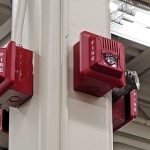The Benefits of a Textile Light Box
Light boxes play a key role in many textile processes, from quality inspection at textile mills to the design and development of garments. They provide bright and consistent illumination to help ensure that the fabric meets quality standards before it is cut and sewn into garments.
Fabric SEG light box displays utilize backlit silicone edge graphics and perimeter LED lighting for a modern frameless look. They use a strip of silicone sewn around the edges that tucks into the channel of the aluminum frame extrusion for fast installation.
Quality inspection
Quality inspection is a critical part of the textile production process, from spinning raw fibres into yarn to weaving and dyeing fabric, to cutting and sewing it into garments. Light boxes provide a bright and consistent illumination that makes it easy for inspectors to identify defects in the finished product. This can help reduce waste, increase efficiency and improve the overall quality of textile products.
A variety of different quality inspections can be performed during the manufacturing process, including First Article Inspection (FAI), which examines the first product produced using intended manufacturing methods. This inspection is important to ensure that the new product will meet predefined standards, and it helps to minimize the risk of poor-quality products reaching customers.
Another type of quality inspection is Container Loading Inspection (CLI), which is performed to ensure that the product meets certain quality standards before it is loaded into shipping containers. This is an essential step in ensuring that the product will arrive at its destination undamaged and ready to be sold.
In order to perform a quality inspection, it is important to have the proper equipment and training. It is also important to communicate with the supplier and the quality control team, and to work together to find solutions for any issues that may arise. A quality inspection can help reduce production costs, prevent safety hazards and avoid customer dissatisfaction.
Design and development
Textile light boxes offer a modern and effective way to showcase graphics, photographs, and messages. They can be used in a variety of applications, from retail stores to events circuits. This type of back-lit display can create a striking visual effect that will draw in customers and increase sales.
This type of lighting is also popular for textiles in fashion design classes, where students can experiment with different materials textile light box and colour combinations. The light box can also help them to learn about the interaction between fibres and colours, and how they can be altered to produce the desired result.
In order to get the most out of your textile lightbox, you should use high-resolution images and graphics. If your artwork is low-resolution, it will look pixelated and detract from the professional look of your display. To avoid this, make sure to work with vector graphics or high-resolution images that can be enlarged without losing quality.
Lightboxes are an excellent choice for businesses that need to change advertising visions frequently. They are lightweight and easy to assemble. They are available in various sizes and can be placed in recesses in the wall. They are also easy to move around, making them an ideal choice for busy locations like shopping malls. They can be easily changed by simply pulling a fabric pull tab to remove the old graphic and inserting a new one.
Education
Light boxes play a crucial role in the textile industry, from quality inspection at textile mills to design and development of garments. They provide bright and consistent illumination that is essential for identifying any inconsistencies or defects in the fabric. They are also used in college and university courses to help students develop their skills and refine their designs before putting them into practice.
The fabric SEG light box has come a long way since its conception 10 years ago, and companies continue to find innovative ways to use them. For example, some retail stores are using them to highlight a celebrity or influencer’s brand in a fashion line. They are also a great way to display visuals at a trade show or event. When selecting a fabric light box, it’s important to consider where you want to place it and whether it will be backlit or edge lit. Backlit displays are better for lighting a fabric graphic evenly and simplifying the installation process. DSA Signage offers a variety of fabric LED light boxes that are suitable for a wide range of industries and applications.
Advertising
A light box is an excellent way to highlight products in your storefront and capture the attention of customers. Whether you’re trying to showcase a new product or draw attention to an ongoing promotion, a backlit fabric lightbox can help. Choosing the right one for your business will depend on a variety of factors, including size, graphics quality, and durability.
Frameless fabric LED light boxes are the latest trend in visual display. They use perimeter LED lighting and backlit fabric graphics to create a modern, frameless look. They are a good choice for retailers that want to differentiate themselves from competitors by providing a more luxurious shopping experience.
The frameless fabric LED lightboxes can be easily inserted into any retail space or event venue. They are made with aluminum frames that provide superior strength and durability. They also have a low profile, making them easy to transport and business light box sign set up. The LEDs are energy-efficient and offer bright white illumination for your brand or product displays.
The SEG backlit fabric lightbox consists of an aluminum frame that holds a SEG or silicone edge graphic. This type of printed fabric is a great solution for backlit displays because it’s extremely durable and resistant to wrinkles. The edges of the fabric are sewn with a strip of silicone, which fits into a channel on the frame extrusion to hold it taught. This process allows for homogenous LED lighting, which is a crucial feature of any light box display.






